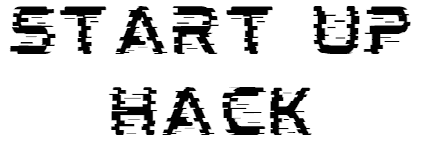This is repurposed content written by James Fleischmann with the original link below.
Ajay Patel started with a coworker and an idea. Now, his team of 20 is bringing in $45k/mo.
SEO, social media, and paid ads all helped, but the real juice was in the product — and one big pivot.
Here’s how he did it. 👇
How did you come up with your idea?
Back in 2011, it was just two of us — me and Vrushank Brahmakshatriya.
We were both working at a software company and realized that, while most products required a backend admin panel, there weren’t many solutions available.
It was really time consuming and repetitive for us to create UI for each project, so we got an idea: What if we create an admin panel & UI kits ourselves?
Where did your product start?
We started by launching one product on Envato’s ThemeForest. That’s where we validated the idea, and we still sell $15-$20k/mo on marketplaces.
But launching our own platform, ThemeSelection, turned out to be a pivotal decision. It gave us complete control over user experience, pricing, and marketing strategies. That’s how we made it to where we are today.
Direct engagement with our customer base was key.
Where is ThemeSelection today?
We have a team of a total of 20+ members. We provide fully-coded Admin Dashboard Templates and UI Kits for designers, developers, and agencies to kickstart their projects easily while saving money, time, effort, and resources.
We have 40+ premium and free products supporting different technologies and frameworks, such as Laravel, Vue, NextJS, NuxtJS, .NET Core MVC, Razor Pages,and many more.
We are earning around $25-$30k per month, with at least half of that coming from our three most popular products. That’s in addition to the $15-$20k that I mentioned we bring in from marketplaces each month.
How do you generate revenue?
All our products are sold on a one-time basis. Each purchase includes one year of complimentary access to all updates and premium support services — this access can be extended yearly.
It’s similar to a perpetual license, granting users lifetime usage rights upon purchase.
We have kept our license structure very flexible since every customer has different needs. While our competitors offer two types of licenses, we offer four.
Customers seem to appreciate this flexibility, which means more conversions.
What was the biggest leap in your growth?
In 2022, we released three products that proved to be game changers for us.
Two, Sneat and Materio, were comprehensive design systems that addressed a wide array of user design preferences.
And because we noticed that customers were working with multiple techs and were therefore interested in purchasing multiple products, we came up with the idea of the Big Bundle.
Basically, our customers can get all of our premium products for roughly the price of two products. It’s good for the customer, and it brings in 40-45% of our total earnings.
Those are the two key steps to building a game changer:
- Identify and address the most common requirements of your users. You can do this by looking at usage patterns.
- Widen your appeal by ensuring that your products are accessible to customers of all sizes via flexible pricing options or bundled packages.
How did you grow your business?
We focus on SEO to maximize organic traffic for our products.
Using tools like Semrush and Ubersuggest, our team determines the keywords to target by identifying search terms that are relevant to both our audience and our product solutions. Then we publish helpful, informative blog posts to attract traffic and establish a customer base.
Another SEO play is that we create free tools for designers and developers, like Free UI kits and a Bootstrap 5 CheatSheet. These are win-wins that generate a lot of relevant, high-quality traffic.
Our traffic is currently about 280k/month, and 40% of that is from organic search. Another 42% is direct.
Other than SEO, we put a lot of time into developer- and designer-oriented communities and platforms like DevTo, Medium, and Hackernoon. Creating content and engaging in these communities has significantly boosted our brand recognition. Currently, we have over 6k+ followers on DevTo and 1k+ followers on Medium.
And we submit our products all over the place. Putting our open-source products on GitHub, Awesome List, and other open-source communities has been huge for building our customer base. Currently, we have a total of 3.6k stars on GitHub and it’s growing rapidly. And we also submit products to the usual platforms: Reddit, Facebook, Twitter, Discord, Dribbble, Instagram, and LinkedIn.
How do you convert traffic?
In today’s competitive world, converting traffic isn’t easy. You have to build trust with freemium or trials. ThemeSelection has 30+ free (open-source) products.
And it goes beyond trust. Many startups and businesses initially build their tools using free products. As they grow and evolve, so do their needs. It’s a long game.
We’ve seen people who’ve hung around with our free versions for years and then finally decided to go premium, which is pretty cool.
Of course, not everyone who grabs a freebie jumps to the premium stuff. In our case, out of the 5,500 free downloads each month, approximately 250 users decide to switch. So, the conversion rate is ~4.55%.
And outside of dollars, this strategy allows us to gauge interest and gain valuable feedback.
What isn’t helping you grow?
We did some paid promotions on various developer- and designer-related sites like MadewithVuejs, SitePoint, and MadewithLaravel. We also tried Meta ads.
The results were alright, but I think organic search and sales are better. Paid marketing isn’t bad, but trust is earned by providing quality; not through ad spend.
If you’re going to experiment with ads, make sure to create multiple ad campaigns for a single platform, and analyze the data to determine which ones yield better engagement.
And avoid making decisions based on short-term results. Instead, gather at least two quarters of ROI data before making any decisions.
What makes you stand out from the competition?
Quality. We want to scale, but not at the cost of what makes us stand out.
So we’re not afraid to put quality and customer satisfaction before sheer size. In fact, that’s how we grow. It has earned us a loyal following and a solid reputation.
We always start with market research. We’re out there, attending the latest design conferences, engaging with the community, and keeping the feedback loop buzzing to ensure that we’re ahead of the curve.
We take an average of 6 to 12 months building each product to ensure design and code quality are maintained. And we don’t outsource our work.
Another part of this is that we focus on support. We provide real-time support using Intercom and we even created a help center with over 30+ articles where customers can search their queries regarding payment, products, licenses, and so on.
At the end of the day, it isn’t just about getting bigger; it’s about getting better.
Original Source: Read Here

